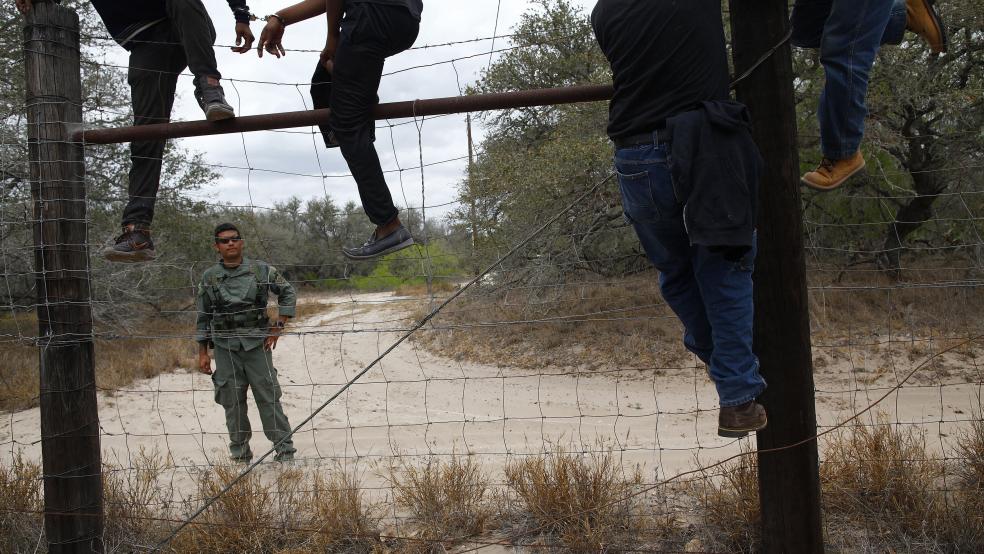About 2,000 miles from the Republican National Convention in Cleveland is the original focal point of the Trump Campaign – the porous U.S. border with Mexico.
But the man with a plan to build a wall between America and the neighbors who keep crossing into its backyard – and beyond – might want to consider the recent experience and expenditure of Texas in trying to keep all those illegal intruders at bay.
Related: Here’s the Problem with Trump’s Plan to Pay for the Border Wall
And Donald Trump might also want to digest the results of a Gallup Poll released yesterday showing that while 62 percent of Republicans favor building a wall, overall 66 percent of Americans reject the idea.
An AP report on Tuesday says that a year after Texas committed millions in state funds to seal its 1,200-mile border with Mexico, none of the counties on the boundary line are secure yet. That’s despite assigning hundreds of more state troopers and buying a $7.4 million surveillance plane.
The Texas Department of Public Safety (DPS) said in an email that of the $733 million appropriated for 2016-2017, 64 percent of the money for the first fiscal year has been spent. Some of those funds are going to hire 250 more troopers and pay for the Pilatus spy plane, with a second aircraft expected to be delivered by the end of the year.
Related: Free Health Care for Illegal Immigrants Now a Campaign Issue
Last February, Trump told MSNBC that the 35- to 40-foot-high wall he wants to build across those sections of the border with Mexico that do not have natural barriers would cost about $10 billion to $12 billion. But a “Fact Checker” story in The Washington Post suggested that the true cost of the wall would be closer to $25 billion and take at least 40,000 workers four years to build.
But even accepting the premise that a wall would cost a lot more than the Republican presidential nominee has suggested (while presumably providing jobs for a great many Americans), would it work?
The Texas experience thus far throws shade on the notion that even a 1,000-mile-long, 40-foot-high wall will be enough to stop the flow of illegal immigrants and illicit drugs from Mexico to America.
Related: Top General Warns of New ISIS Threat on US Southern Border
Department of Public Safety chief Steve McCraw, under pressure to deliver results, is now offering lawmakers benchmarks that show a county is under “substantial control,” the AP said. But so far, McCraw told the AP, there are none.
Before the border can be declared secure, there may need to be “round-the-clock marine patrols, day and night aerial coverage and redundant installations of cameras and sensors,” the story said.
Part of the state money is also being used to establish a DPS unit to investigate public corruption brought on by the presence of drug cartels responsible for drug and human trafficking and other crimes. “Currently, Mexican cartels pose the most significant organized crime threat to Texas, with seven of the eight cartels operating command and control networks in the state,” the DPS told The Fiscal Times, adding that “the Mexican cartels are adept at corrupting law enforcement officers and public officials” on both sides of the border.
Related: Exclusive: U.S. Plans New Wave of Immigrant Deportation Raids
Meantime, Gallup found that by a wide margin, Americans favor a path to citizenship for illegal immigrants. Trump originally said he would deport some 11 million people here illegally, but he has since dialed that back a bit.
Among Republicans, 76 percent favor “the chance to become U.S. citizens if they meet certain requirements over a period of time,” the Gallup survey said. Among all Americans, the number is 84 percent.





